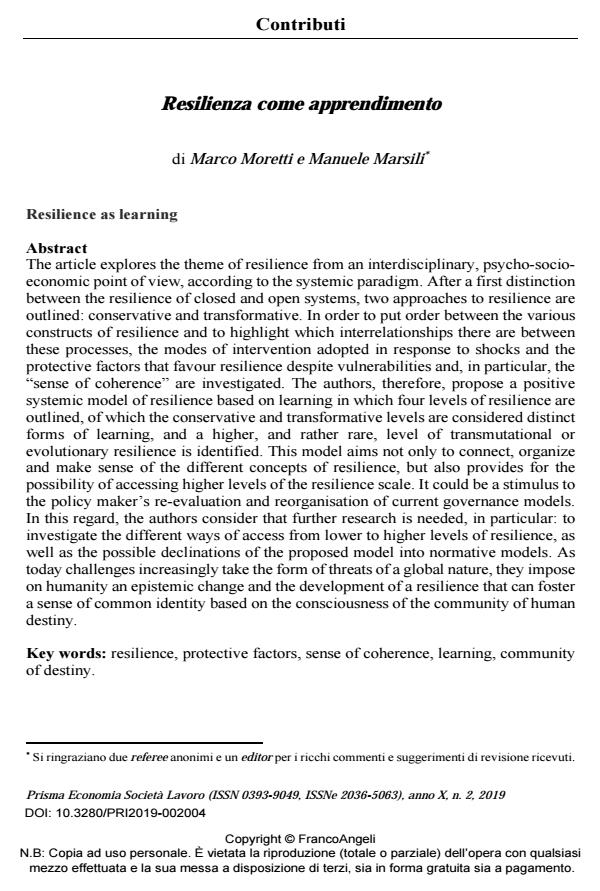Resilience as learning
Journal title PRISMA Economia - Società - Lavoro
Author/s Marco Moretti, Manuele Marsili
Publishing Year 2020 Issue 2019/2
Language Italian Pages 25 P. 58-82 File size 338 KB
DOI 10.3280/PRI2019-002004
DOI is like a bar code for intellectual property: to have more infomation
click here
Below, you can see the article first page
If you want to buy this article in PDF format, you can do it, following the instructions to buy download credits

FrancoAngeli is member of Publishers International Linking Association, Inc (PILA), a not-for-profit association which run the CrossRef service enabling links to and from online scholarly content.
The article explores the theme of resilience from an interdisciplinary, psycho-socio-economic point of view, according to the systemic paradigm. After a first distinction between the resilience of closed and open systems, two approaches to resilience are outlined: conservative and transformative. In order to put order between the various constructs of resilience and to highlight which interrelationships there are between these processes, the modes of intervention adopted in response to shocks and the protective factors that favour resilience despite vulnerabilities and, in particular, the "sense of coherence" are investigated. The authors, therefore, propose a positive systemic model of resilience based on learning in which four levels of resilience are outlined, of which the conservative and transformative levels are considered distinct forms of learning, and a higher, and rather rare, level of transmutational or evolutionary resilience is identified. This model aims not only to connect, organize and make sense of the different concepts of resilience, but also provides for the possibility of accessing higher levels of the resilience scale. It could be a stimulus to the policy maker’s re-evaluation and reorganisation of current governance models. In this regard, the authors consider that further research is needed, in particular: to investigate the different ways of access from lower to higher levels of resilience, as well as the possible declinations of the proposed model into normative models. As today challenges increasingly take the form of threats of a global nature, they impose on humanity an epistemic change and the development of a resilience that can foster a sense of common identity based on the consciousness of the community of human destiny.
Keywords: Resilience, protective factors, sense of coherence, learning, community of destiny.
Marco Moretti, Manuele Marsili, Resilienza come apprendimento in "PRISMA Economia - Società - Lavoro" 2/2019, pp 58-82, DOI: 10.3280/PRI2019-002004